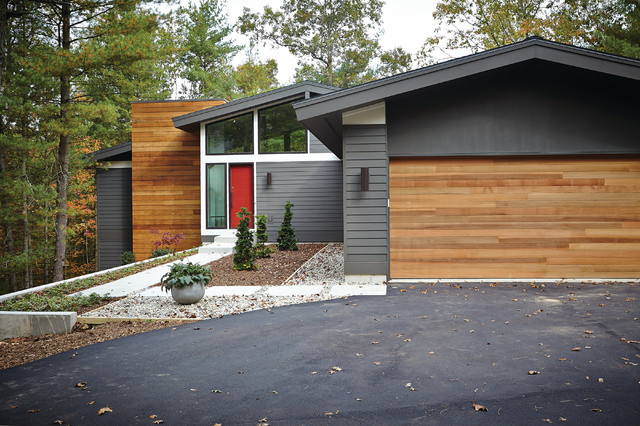

In this day and age, building materials, labor and just about everything seems to be raising in cost. Building a new home is nice, but the price seems to be doubling daily to do so. Why not just look at the beauty and character already established and embrace the past? Your style taste can always update the interior, so here are a few reasons to buy or keep a Mid-century home.
1. Sloped roofs add drama and are practical.
Pitched roofs are the roofs that range from a slight to drastic slope. They naturally do not accumulate snow because it slides off. They require smaller structural members and do not retain water at all, keeping the house watertight! From a design viewpoint, the roofline can be built to accentuate the topography pf the area, whether it be pointing skyward or perfectly nestled into the trees.
2. Architecture can be a natural climate control.
Yes, you heard correctly. Architecture can be a natural climate control. Hello, lower utility bills! In the 1950s, it was normal to not have an air conditioner and retaining heat in the winter was key. These houses were structured to stay cool in the summer and warm in the winter with very little help. Windows are usually placed on the southern walls with overhangs that create shadows like a brim on a hat. This allows the windows to remain cool in the summer and guide warmth into the home during the winter months. It is also normal for the homes to have doors on opposing walls to create air flow through rooms or the house has whole house fans that help create air flow! This also will lower your carbon footprint, if you live a green lifestyle.
3. Straightforward layouts create interest and understanding.
The layout of these homes is divided into “zones.” Due to this type of layout, it is easy to see and understand the architect’s thought process in building. It essentially guides you in decorating and makes it easy to pick out where everything was meant to be placed. Large open spaces are a norm in this style of home which allows for large spaces to entertain and create continuity. If you have a wall of windows, make sure to use the wall as a focal point.
4. Simple materials provide more creative flexibility.
This is so true. In the 1950s, builders used mainly aluminum and wood siding. Building materials have come a long way since then. Opt for cement board, plastic or PVC. All of these are durable and have a painted finish that is easy to maintain. Most likely, you will be giving the siding a fresh coat of paint to go with your sense of style. Make sure the materials beneath it are just as durable for an easy upkeep.
5. Minimal frills can accentuate details you might want to otherwise hide.
The staircase, usually in the main entryway, is not an easy thing to hide; especially, when they are free-standing. The craftsman made the staircase as a way to show off their craftsmanship and the latest trends in new materials for the time. Embrace this structural piece of art, and you will learn to love it.









